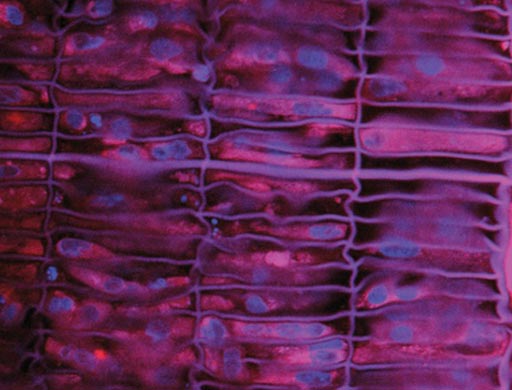Regeneration of Heart Tissue Induced by Cardiac Stem Cells
By LabMedica International staff writers
Posted on 09 Feb 2017
Nanoscale three-dimensional printing was used to create a scaffold for the growth of cardiovascular tissue that could be transplanted into a damaged heart following a heart attack.Posted on 09 Feb 2017
The heart cannot normally regenerate muscle tissue after a heart attack has killed part of the muscle wall. In order to spur the damaged heart into regenerating new tissue, investigators at the University of Alabama and the University of Minnesota used multiphoton-excited, three-dimensional printing (MPE-3DP) to generate a native-like, extracellular matrix (ECM) scaffold with submicron resolution.

Image: Heart cells growing in rectangular, box-like scaffold made with three-dimensional printing (Photo courtesy of the University of Alabama).
This novel scaffolding was seeded with approximately 50,000 human, iPSC (induced pluripotent stem cell)-derived cardiomyocytes (CMs), smooth muscle cells (SMCs), and endothelial cells (ECs) in a 2:1:1 ratio to generate the hCMP (human, iPSC-derived cardiac muscle patch). The patch began generating calcium transients and beating synchronously within one day of seeding; the speeds of contraction and relaxation and the peak amplitudes of the calcium transients increased significantly over the next seven days.
The investigators reported in the January 9, 2017, online edition of the journal Circulation Research that when tested in mice with surgically induced myocardial infarction (MI), measurements of cardiac function, infarct size, apoptosis, both vascular and arteriole density, and cell proliferation at week four after treatment were significantly better in animals treated with the hCMPs than in animals treated with cell-free scaffolds.
The authors concluded that, “Thus, the hiPSC-derived cardiac muscle patches produced for this report may represent an important step toward the clinical use of three-dimensional-printing technology. To our knowledge, this is the first time modulated raster scanning has ever been successfully used to control the fabrication of a tissue-engineered scaffold, and consequently, our results are particularly relevant for applications that require the fibrillar and mesh-like structures present in cardiac tissue.”














